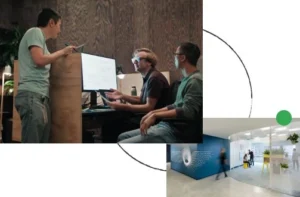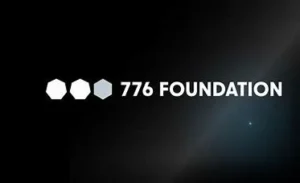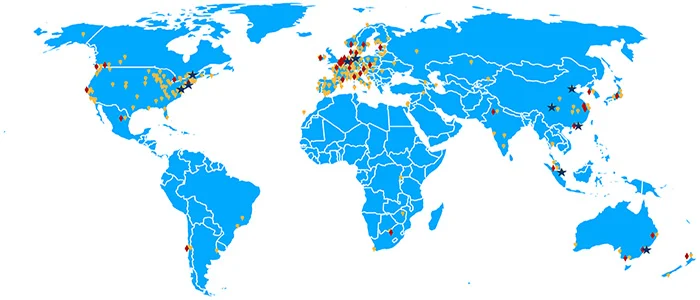 In general, the application process for European universities includes filling out an application form, writing a statement of motivation, two letters of reference, and possibly do an extra supplement if your requires it.
In general, the application process for European universities includes filling out an application form, writing a statement of motivation, two letters of reference, and possibly do an extra supplement if your requires it.
Personal Statements
Your statement of motivation to study is the strongest point of your application, so you want to make sure you convey yourself as professional, determined, and guided. We recommend you contact us to review your statement of motivation. We can identify mistakes and give better clarity to your writing. The following tips will help guide you when writing your application statements:
- Highlight any involvement in the country’s culture you have had and mention any prior international experience, especially if it was for a study abroad.
- Make sure to have topic sentences for paragraphs and an introduction. Then, check for continuity and flow.
- Make sure that the font used is at least 12 if using Times, maybe 11 if needed.
- Remember that the take-home point for the admissions committee is not that you did these things, checklist-style. It is what you took away from doing these things and how you performed.
- Tell them you believe you are a well-suited or well-qualified candidate, and then show them why.
- Be specific in what you have achieved and what you still plan to achieve.
- Be humble.
Letters of reference
First of all, some do not ask for letters of reference at all. However, if letters are not required, but you do send them in (and they are positive), does your application not suddenly become much more appealing to the admissions and scholarship committees? Before you take your initiative, ask. Contact someone at the university admissions and ask if you can include letters, even though they are not required.
Deadlines
Another thing to focus on for European university is the deadlines — especially if you have to submit everything via post since it will take longer to send documents internationally. Also, keep in mind time zone differences for both online and mail applications. There is nothing worse than going to submit your application only to find out that it is late because of the time difference. Different universities have varying admissions and scholarship deadlines, these are all over the place. Another final piece of advice: if you are still in undergraduate, start applying the summer before your final semester or plan to start applying after you graduate (with a potential gap in your studies).
Scholarships and finances

Usually, the study period will give you time to find work on the side or an internship of some sort with a local company, and your visa will support you doing this. However, this is not always an option.
To prepare, start looking at scholarships — both through the universities you are applying to and outside providers — when you begin the application process. We can equally help you with this.
One of the most well-known options is the Fulbright grant. To be considered, you have to apply for about a year in advance. If you want to study in Europe the fall of 2020, the application has to be turned in by the end of the spring of 2019.
Other big scholarships include the Mitchell (Ireland), Bi Presidential Scholarship (Norway), Rhodes Scholarship (Oxford), and Gates Cambridge (Cambridge), which fully fund graduate study in their respective destinations. These are very competitive, however, and they are mostly done through campus scholarship committees at your undergraduate institution.
Some countries subsidize their education. For example, Norway and Germany have made all of their public universities free of tuition for all students, including international ones. What this means for you is that you can attend a university in Norway or Germany for two years for around 10,000 EUR per year for living costs, food, and student fees that usually include an all-inclusive transportation pass for the area, and you can work on the side. If you find a German private university that still makes you pay tuition, you can apply for funding from the DAAD or the German Academic Exchange Service.
Not all subsidies apply to international students, though. Sweden and Denmark, for example, subsidize their universities for citizens, but for international students, tuition is just as expensive as you can think of. One of the perks, however, is that at an institution that offers a 1-year degree program, you will be paying the same tuition as you would back home, but for one year instead of two.
Visas
 Schengen countries will help you have a visa turned into a residence permit to allow you to travel around Europe while doing your study. Others require you to have a normal visa for study, but it is important to look into the exact requirements of the visa. If you want to stay in Europe and find work in your country once your study session is finished, you do not want to pursue a visa that only gives you a leeway time of two weeks to get out the country unless you’re very certain you’ll have a job once you graduate. Visas can also have varying costs. Sometimes it’s minimal, other times it can be 500 EUROS. It depends on the country.
Schengen countries will help you have a visa turned into a residence permit to allow you to travel around Europe while doing your study. Others require you to have a normal visa for study, but it is important to look into the exact requirements of the visa. If you want to stay in Europe and find work in your country once your study session is finished, you do not want to pursue a visa that only gives you a leeway time of two weeks to get out the country unless you’re very certain you’ll have a job once you graduate. Visas can also have varying costs. Sometimes it’s minimal, other times it can be 500 EUROS. It depends on the country.
A Real-Life Example of What Applying to European Universities Looks Like
Starting November of 2017, I started applying to universities in Europe (on my own, not through a scholarship entity) and I got admitted to all the Universities I applied to. These included:
Mater of Arts in Public Administration at University of Bergen
Master of Science in International Relations and International Law at University of Aberdeen
Master in European Studies at International Graduate Center (IGC) Hochschule Bremen-Germany, City University of Applied Sciences







